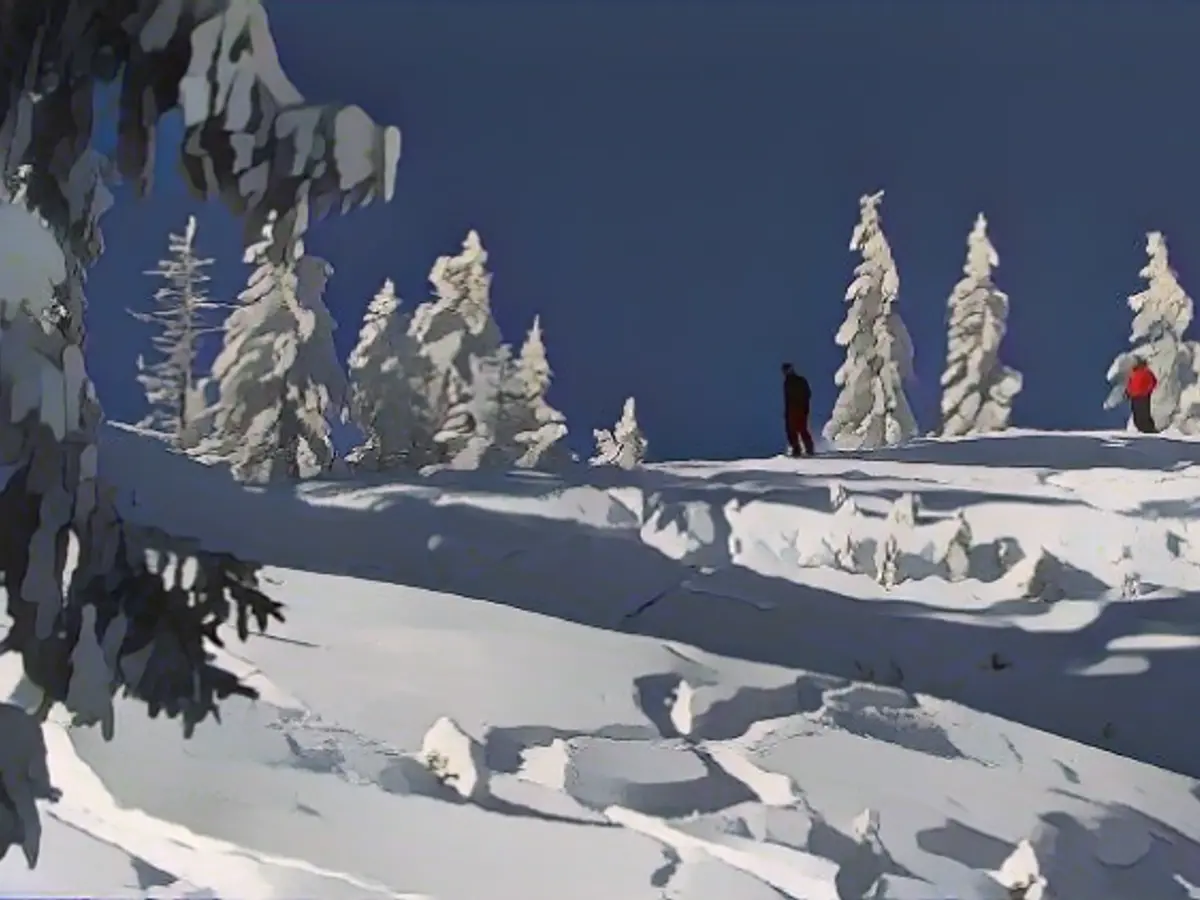Snow in abundance: Acting correctly in the event of avalanche danger
Vacation at last - and then there's the lure of deep powder snow away from the slopes. However, the risk of an avalanche is high there. To prevent this from happening in the first place, you should know a few rules of conduct and act quickly and carefully in an emergency.
A winter snow paradise can quickly turn into a nightmare. Glistening fresh snow and deep powder lure skiers and snowboarders off-piste - but a white danger lurks there: every year, numerous winter sports enthusiasts die in avalanches. With the right knowledge and a few precautionary measures, the risk of being swept away by an avalanche can be significantly reduced. How can you protect yourself from avalanches and what can you do if an emergency occurs?
How do avalanches occur?
An avalanche occurs when large amounts of snow cover break away. Most snowpacks consist of several layers that build up during different periods of precipitation. The more different the properties of the layers, the more unstable the snowpack structure is. Overloading the layers can lead to a crack forming and large parts of the snowpack moving down the slope. Natural triggers are only the cause of around ten percent of all avalanches. Around 90 percent are caused by external triggers, mostly animals and humans.
The most important rules of conduct
To protect yourself from possible avalanches, there are a few things you should bear in mind before heading outdoors. As a general rule: never go off-piste alone, only in a group and preferably with a mountain guide who knows the area.
Proper preparation is important: check the weather forecast and the terrain carefully, and find out about the current avalanche risk and snow situation.
Anyone skiing off-piste should not do so without the right emergency equipment. This includes an avalanche transceiver (avalanche transceiver), an avalanche shovel and a probe. A rucksack with an avalanche airbag is also a good idea. Before setting off, it is important to check the equipment carefully. An avalanche transceiver only helps if it has full batteries.
Before you leave the piste, you should carefully inspect the open terrain. Beware of cracks, risk factors such as fresh snow, wind or steep slopes. Steep slopes should also always be skied down one at a time or at a distance.
Act correctly in an emergency
If all caution has failed and you find yourself in the danger zone of an avalanche, you need to act quickly. First of all, you should try to ski out of the avalanche sideways. If this does not work, you should first throw down the poles: They can act like an anchor and pull you downwards, as well as causing stab wounds. Therefore, never use the pole loops in open terrain.
If you have an avalanche backpack, you should deploy it. At all costs, try to stay on the surface of the snow by swimming. When the snow comes to a standstill, hold your arms in front of your chest and your hands in front of your face to create a breathing cavity. In theory, you can survive being buried for up to 130 minutes.
Anyone who witnesses an avalanche or is able to save themselves should act quickly but prudently. Every minute makes the difference between life and death: after 15 minutes under the masses of snow, the chances of survival drop significantly. First of all, you should get yourself out of danger and watch out for possible secondary avalanches. Then inform the rescue services as quickly as possible, inform them about the avalanche and possible buried people and follow the instructions of the emergency services. It is important to memorize where people may have been buried.
Read also:
- This will change in December
- Attacks on ships in the Red Sea: shipping companies avoid important trade route
- Houthi rebels want to launch further attacks despite international coalition
- USA forms military coalition against Houthi attacks on ships in the Red Sea
- Consumers planning their ski vacation should consider the avalanche hazard and follow the advice of an advisor, as understanding the terrain and knowing how to respond in an emergency can greatly enhance safety.
- For winter sports enthusiasts who love to explore off-piste, having the right equipment such as an avalanche transceiver, shovel, and probe, and being aware of the snow conditions and potential avalanche risks, can make their vacation enjoyable and safer.
- As travelers prepare for their winter sports vacation, they should research the local advisory services, obtain up-to-date information on avalanche risks, and be well-equipped to detect snow instability and react appropriately in case of an avalanche.
Source: www.ntv.de







